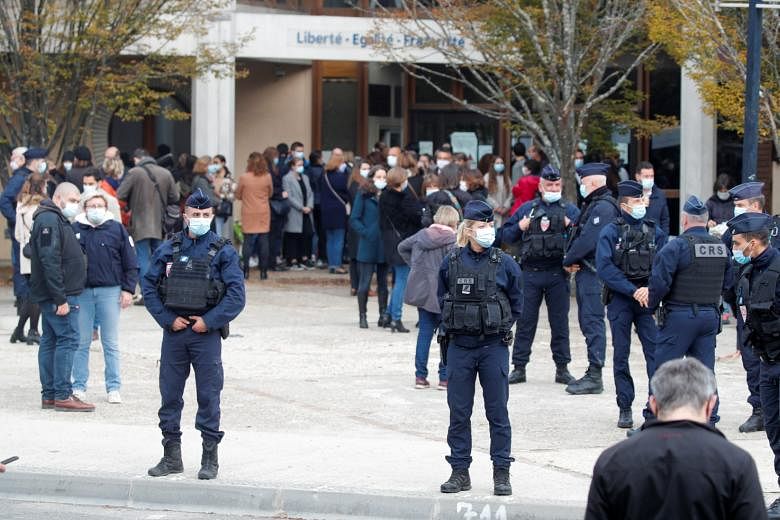PARIS (REUTERS) - The teenager identified by prosecutors as Abdoulakh A. lived with his family and had never appeared on the radar of French intelligence agencies. But he propelled himself into their sights in horrific manner on Friday (Oct 16) evening when he beheaded a school teacher in broad daylight.
The 18-year-old had a record of juvenile delinquency but was too young for police to have built up a file on him. He lived in a Chechen community that is not well understood by intelligence services.
He used a knife to decapitate middle school history teacher Samuel Paty, who had shown cartoons mocking the Prophet Mohammad to his students in a class on freedom of expression. He was shot dead by police minutes after the attack in a Paris suburb.
The profile of the attacker, as recounted by law-enforcement officials, illustrates the difficulties security agencies face identifying would-be attackers who are often exposed to extreme ideology on the internet and whose contacts with other Islamist militants, if they have any, may have been purely virtual.
The government says about 20,000 people in France are on the intelligence agencies' "Fiche S", a watchlist of people of posing a security risk to the country. Only a small number of these are under active surveillance.
Abdoulakh A. was not on the list at all, police sources said.
This is not the first time intelligence services have been blindsided like this.
The 25-year-old Pakistani man who wounded two people last month in a meatcleaver attack outside the former Paris office of the satirical magazine Charlie Hebdo, which published cartoons lampooning the Prophet Mohammad, was not on the Fiche S list.
Nor was the IT worker with the Paris police force who knifed four colleagues to death a year earlier.
Abdoulakh A., who was Russian-born and of Chechen origin, was living in the town of Evreux northwest of Paris, according to authorities. On Friday night, police arrested his parents, younger brother and one grandparent, a judicial source said, wanting to establish what they knew of his plans and if he had any accomplices.
Some Islamist militants in western countries have been characterised as "lone wolf" attackers. But counter-terrorism experts say it is rare that attackers truly act alone, even if they don't physically meet their accomplices.
The challenge for security services has been to tap into the networks that groom Islamist attackers, both by building stronger relationships with Muslim communities, and infiltrating jihadist social media accounts.
They have had some success in doing that with France's North African community, which has been in the country for many generations. But the Chechen community is more opaque, with most of its members having arrived after the mid-1990s.
"We don't know too much what is happening in the Chechen diaspora," said Asiem El Difraoui, a political analyst and specialist on jihadism. "There are not many people in the intelligence services who understand the language, and there is a shortage of translators."
Mr Mairbek Vachagaev, a Chechen emigre living in Paris who runs a newsletter for the Chechen community, wrote on the Telegram messaging service after Friday's killing: "I'm sure that the whole 67,000-strong Chechen Diaspora in France is in shock over what happened."

